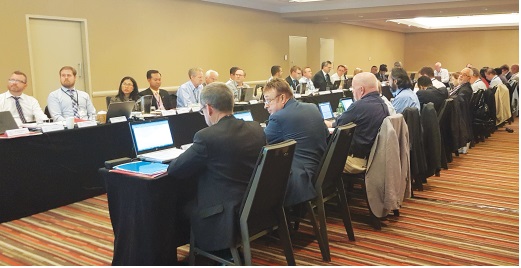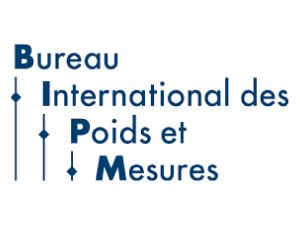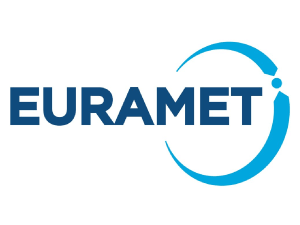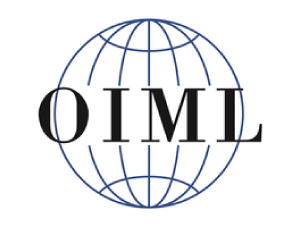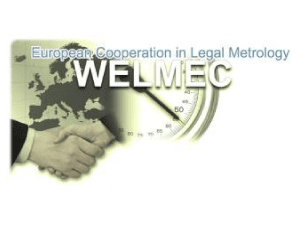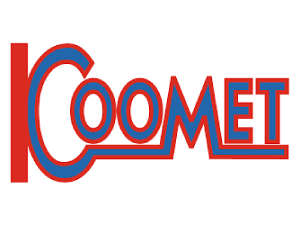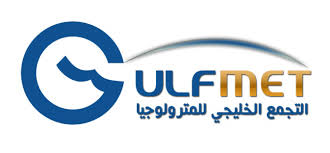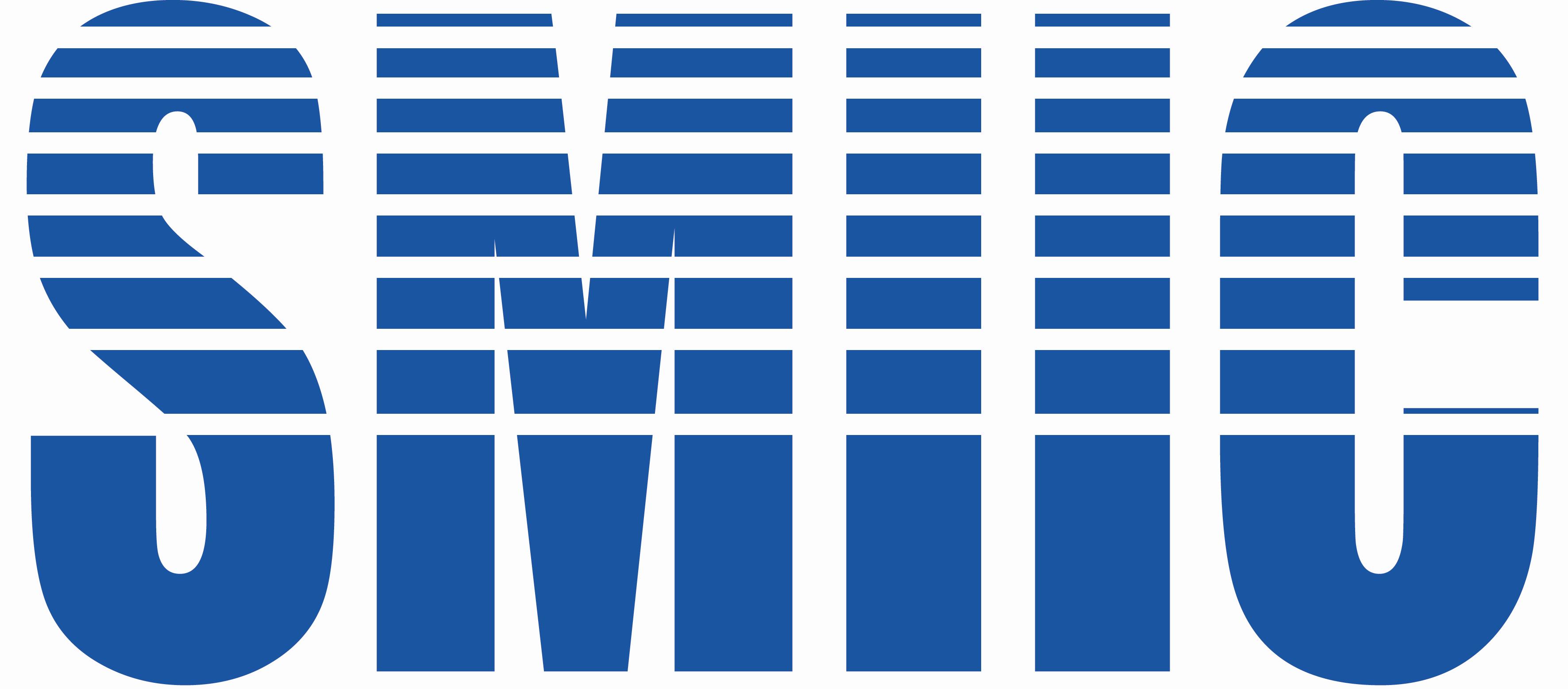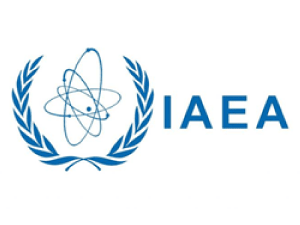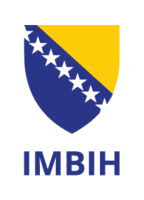
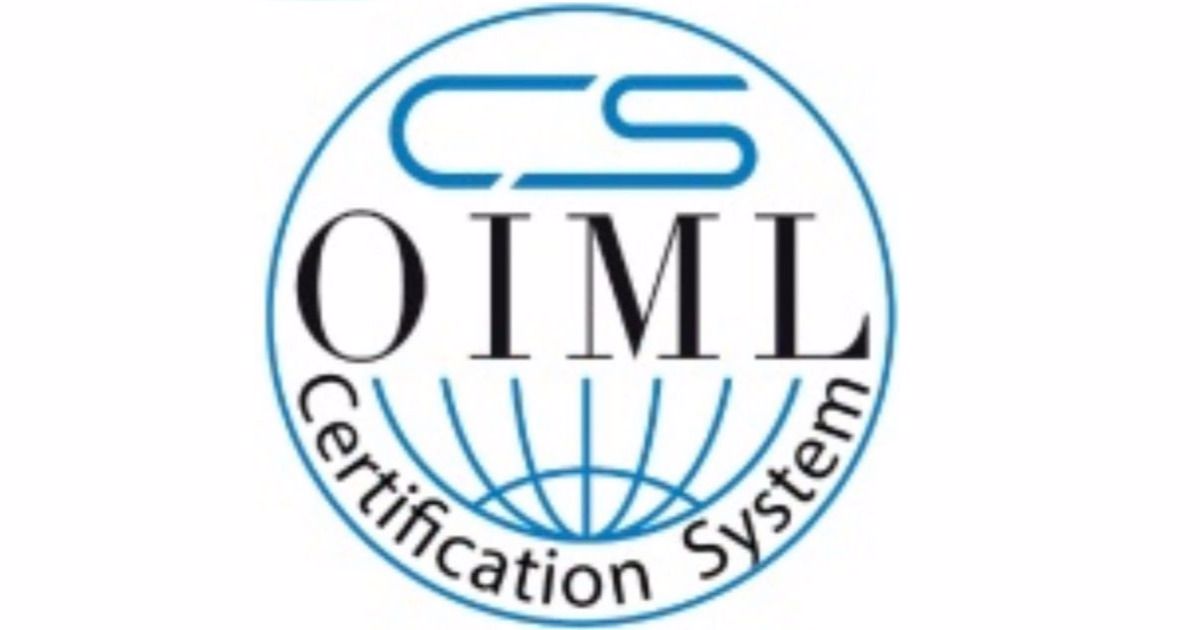
COCK OOSTERMAN (Netherlands)
MC Chairperson
Introduction
The OIML Certification System (OIML-CS) came into operation on 1 January 2018 with the participation of 20 countries. The aim of the OIML-CS is to harmonize the work of national bodies that are responsible for the type evaluation and approval of measuring instruments subject to legal metrological control. In the same way, manufacturers of measuring instruments, who are required to obtain type approval in countries in which they wish to market their products, may benefit from the OIML-CS as it provides evidence that their instrument type complies with the requirements of the relevant OIML Recommendation.
The objective of the OIML-CS is to avoid unnecessary re-testing when obtaining national type evaluations and approvals. OIML Issuing Authorities approved by the OIML-CS Management Committee issue OIML Certificates and OIML type evaluation reports for measuring instruments according to the relevant OIML Recommendation. National or regional authorities then utilize these OIML Certificates and/or OIML type evaluation reports to issue national or regional approvals. By this approach, the measuring instrument type needs to be tested only once by an approved test laboratory
At present, ten OIML Issuing Authorities and 21 Test Laboratories are approved under the OIML-CS as competent bodies to perform tests and examinations according to the relevant OIML Recommendations. These authorities are located in Australia (NMIA), Denmark (Force), France (LNE), Germany (PTB), Japan (NMIJ), Netherlands (NMi), P.R. China (NIM), Slovakia (SLM), Switzerland (METAS) and the United Kingdom (NMO). These countries, plus Belgium, Cambodia, Canada, Colombia, Cuba, India, Korea (R.), Latvia, Namibia, New Zealand, South Africa and the United States, have committed to utilize OIML Certificates and/or OIML type evaluation reports for issuing national type approvals. The OIML-CS covers 18 categories of measuring instruments such as utility meters, automatic and nonautomatic weighing instruments, taximeters and fuel measuring instruments (including fuel dispensers).
OIML Certification System development
The OIML Basic Certificate System was developed in 1991. As an intergovernmental organization, the OIML aims to harmonize the regulations and metrological controls applied by national metrological services. In order to establish international harmonization of metrological requirements for different kinds of measuring instruments, OIML Recommendations are developed by Project Groups under Technical Committees or Subcommittees. Currently there are more than 100 Recommendations available. These Recommendations are intended as model regulations for a number of categories of measuring instruments. OIML Member States are morally obliged to implement these as far as possible. For example, these Recommendations are recognized by the European Commission as “normative documents” to demonstrate compliance with EU Directives. Corresponding tables are developed by the European Cooperation in Legal Metrology (WELMEC) between the OIML Recommendations and the European Directive 2014/32/EU (MID) for different categories of instruments. Using this approach, OIML Recommendations serve as normative documents for automatic weighing instruments, utility meters and taximeters under the 2014/32/EU Directive. Also other countries/regions align their national regulations with OIML Recommendations and accept OIML test results for national approval, sometimes with some additional national requirements.

Manufacturers have already used OIML Certificates for many years to issue national type approvals for measuring instruments. The main approach of the OIML-CS is that the instrument is tested according to the relevant OIML Recommendation only once and then accepted by national authorities worldwide. This acceptance was in several cases supported by Mutual Recognition Arrangements (MRA) between the OIML Issuing Authorities.
One-stop testing, global access
Although the Basic Certificate System functioned correctly, improvements were needed. Whereas a number of Issuing Authorities performed their work under accreditation, some self-declared their competence. No requirements were laid down concerning accreditation, and the application of manufacturer test results was not visible. These shortcomings endangered the acceptance of OIML type evaluation/test reports and OIML Certificates for a number of countries. To improve the system, the OIML Mutual Acceptance Arrangement (MAA) was established in 2005, which led to the creation of a Declaration of Mutual Confidence (DoMC) between different countries for each category of measuring instrument. The MAA was based on accreditation or peer assessment of the testing laboratory according to ISO/IEC 17025. By December 2017 over 4000 certificates had been issued under the Basic System and the MAA, of which more than 1000 were issued under the MAA. However, the MAA was limited to only three categories of measuring instruments – water meters (R 49), load cells (R 60) and non-automatic weighing instruments (R 76). Having two systems in parallel, with a limited number of categories of instruments under the MAA and having no requirements for determining the competence of the Issuing Authority led to the need to revise the complete system.
On 1 January 2018 the OIML-CS was launched. The OIML-CS consists of two schemes: Scheme A (comparable with the MAA) and Scheme B (comparable with the Basic Certificate System). Furthermore, OIML Issuing Authorities shall comply with ISO/IEC 17065 requirements and the Test Laboratories shall comply with ISO/IEC 17025. The OIML-CS was launched with non-automatic weighing instruments (R 76) and load cells (R 60) in Scheme A. All other categories of measuring instruments started in Scheme B and will be transferred to scheme A within two years. In 2020, all instruments shall be under Scheme A, meaning that Scheme B Certificates will no longer be issued. By this approach, the OIML-CS will have succeeded in upgrading all certificates to a level that meets the current international standards (instead of selfdeclaration). Meeting the International Accreditation Forum (IAF) and the International Laboratory Accreditation Cooperation (ILAC) accreditation requirements should encourage potential authorities to participate in the OIML-CS and accept OIML Certificates and/or OIML type evaluation reports. All OIML Certificates issued under the Basic System and the MAA remain valid, and transition arrangements have been established to use “old” test data under the new system.
OIML-CS operational on 1 January 2018
The first OIML-CS Scheme A Certificates started to be issued directly after the OIML-CS became operational. Potential OIML Issuing Authorities had already taken steps to prepare for the new system in 2017 and had provided their applications and supporting documentation to the Executive Secretary for review. Issuing Participants under the MAA who applied for the OIMLCS were able to directly continue their work as an OIML Issuing Authority under Scheme A without further assessment of their Test Laboratory(ies). The first certificates for OIML R 60 and R 76 were issued in January 2018. Potential OIML Issuing Authorities (IAs) who applied under Scheme B had to first be reviewed by the experts on the Review Committee (RC). The Management Committee members were consulted by the Executive Secretary by email and conducted an electronic vote on the OIML IAs based on the recommendations from the RC. The Management Committee members approved these bodies as OIML Issuing Authorities under the OIML-CS. As a result, the first Scheme B Certificates were issued in March 2018. With this recognition, OIML Issuing Authorities under the OIML-CS are able to serve their clients with OIML Certificates from the outset of the system in 2018 and can continue their activities under the OIML-CS. More countries have shown an interest in participating or are already in the process of participating. These developments will provide manufacturers with more opportunities to place their products on a global market.
First OIML-CS Management Committee meeting
The first OIML-CS Management Committee (MC) meeting took place on 21–22 March 2018 at NMI Australia. In total 21 countries (Australia, Belgium, P.R. China, Cambodia, Colombia, Cuba, Denmark, France, Germany, India Japan, Korea, Latvia, Netherlands, New Zealand, Russian Federation, Slovakia, South Africa, Switzerland, United Kingdom and United States) were represented as members of the Management Committee. In addition, liaison organizations (SIM, ILAC, IAF, WELMEC and IEC) and manufacturers’ associations (CECIP and CECOD) participated in the meeting.
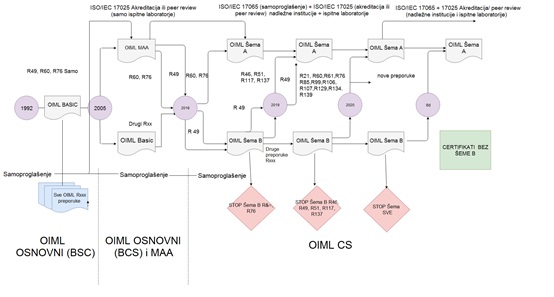 On 1 January 2018 the OIML-CS was launched. The OIML-CS consists of two schemes: Scheme A (comparable with the MAA) and Scheme B (comparable with the Basic Certificate System). Furthermore, OIML Issuing Authorities shall comply with ISO/IEC 17065 requirements and the Test Laboratories shall comply with ISO/IEC 17025. The OIML-CS was launched with non-automatic weighing instruments (R 76) and load cells (R 60) in Scheme A. All other categories of measuring instruments started in Scheme B and will be transferred to scheme A within two years. In 2020, all instruments shall be under Scheme A, meaning that Scheme B Certificates will no longer be issued. By this approach, the OIML-CS will have succeeded in upgrading all certificates to a level that meets the current international standards (instead of selfdeclaration). Meeting the International Accreditation Forum (IAF) and the International Laboratory Accreditation Cooperation (ILAC) accreditation requirements should encourage potential authorities to participate in the OIML-CS and accept OIML Certificates and/or OIML type evaluation reports. All OIML Certificates issued under the Basic System and the MAA remain valid, and transition arrangements have been established to use “old” test data under the new system.
On 1 January 2018 the OIML-CS was launched. The OIML-CS consists of two schemes: Scheme A (comparable with the MAA) and Scheme B (comparable with the Basic Certificate System). Furthermore, OIML Issuing Authorities shall comply with ISO/IEC 17065 requirements and the Test Laboratories shall comply with ISO/IEC 17025. The OIML-CS was launched with non-automatic weighing instruments (R 76) and load cells (R 60) in Scheme A. All other categories of measuring instruments started in Scheme B and will be transferred to scheme A within two years. In 2020, all instruments shall be under Scheme A, meaning that Scheme B Certificates will no longer be issued. By this approach, the OIML-CS will have succeeded in upgrading all certificates to a level that meets the current international standards (instead of selfdeclaration). Meeting the International Accreditation Forum (IAF) and the International Laboratory Accreditation Cooperation (ILAC) accreditation requirements should encourage potential authorities to participate in the OIML-CS and accept OIML Certificates and/or OIML type evaluation reports. All OIML Certificates issued under the Basic System and the MAA remain valid, and transition arrangements have been established to use “old” test data under the new system.
OIML-CS operational on 1 January 2018
The first OIML-CS Scheme A Certificates started to be issued directly after the OIML-CS became operational. Potential OIML Issuing Authorities had already taken steps to prepare for the new system in 2017 and had provided their applications and supporting documentation to the Executive Secretary for review. Issuing Participants under the MAA who applied for the OIMLCS were able to directly continue their work as an OIML Issuing Authority under Scheme A without further assessment of their Test Laboratory(ies). The first certificates for OIML R 60 and R 76 were issued in January 2018. Potential OIML Issuing Authorities (IAs) who applied under Scheme B had to first be reviewed by the experts on the Review Committee (RC). The Management Committee members were consulted by the Executive Secretary by email and conducted an electronic vote on the OIML IAs based on the recommendations from the RC. The Management Committee members approved these bodies as OIML Issuing Authorities under the OIML-CS. As a result, the first Scheme B Certificates were issued in March 2018. With this recognition, OIML Issuing Authorities under the OIML-CS are able to serve their clients with OIML Certificates from the outset of the system in 2018 and can continue their activities under the OIML-CS. More countries have shown an interest in participating or are already in the process of participating. These developments will provide manufacturers with more opportunities to place their products on a global market.
First OIML-CS Management Committee meeting
The first OIML-CS Management Committee (MC) meeting took place on 21–22 March 2018 at NMI Australia. In total 21 countries (Australia, Belgium, P.R. China, Cambodia, Colombia, Cuba, Denmark, France, Germany, India Japan, Korea, Latvia, Netherlands, New Zealand, Russian Federation, Slovakia, South Africa, Switzerland, United Kingdom and United States) were represented as members of the Management Committee. In addition, liaison organizations (SIM, ILAC, IAF, WELMEC and IEC) and manufacturers’ associations (CECIP and CECOD) participated in the meeting.
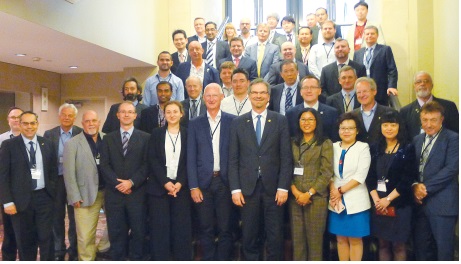
A number of countries were already active in the OIML Basic Certificate System and/or the MAA. Colombia, Cambodia, Cuba, Latvia and Namibia are new participants in the OIML-CS who stepped into the system as Utilizers or Associates. This means that these countries now accept OIML-CS Certificates and/or OIML type evaluation reports to issue national or regional approvals. Furthermore, the MC approved additional Legal Metrology Experts to perform assessments at the Test Laboratories working under the OIML-CS. The MC also agreed to add certain OIML Recommendations to the OIML-CS and proposed some changes for the transition from Scheme B to Scheme A. As a result, OIML Issuing Authorities and Test Laboratories can extend their scope with additional measuring instruments in the near feature under Schemes A and B.
Benefits for Utilizers and Associates
Countries with emerging economies currently do not always have sufficient capabilities to assess the conformity of complex measuring instruments that are under legal control. Smart utility meters can be of great benefit for these countries, but the testing of these meters can be complicated. National authorities that are responsible for the approval of these instruments have to rely on the testing capabilities of their designated test laboratories before the instruments are placed on their market. These laboratories are not always equipped with adequate technologies to test these instruments, or do not have sufficient knowledge available. Nevertheless, these countries have a great need in putting these instruments into use in their countries. Smart utility meters are already widely installed in different regions. These meters have numerous advantages for both energy suppliers and users when compared to mechanical meters. Smart and also prepaid meters can be of great benefit for other regions, such as large countries with remote areas. Remote reading of the meter is a major advantage. Additionally, fraud can be detected more easily. However, these meters contain electronics and software with new technologies. Software especially plays an essential role. National test laboratories in countries with emerging economies which are designated to perform independent examinations of these instruments have limited resources to evaluate the software. Consequently, manufactures encounter long waiting times to obtain approval of their products. Countries such as Colombia, Cambodia, Cuba and India now draw full benefit from the OIML-CS as Utilizers to overcome this obstacle. They trust the competence of approved OIML Issuing Authorities which perform type examination of measuring instruments. Their trust in the OIML Certificates and associated type evaluation reports is based on the quality infrastructures of the OIML Issuing Authorities and accompanying Test Laboratories.
Transition arrangements from OIML Basic/MAA to OIML-CS
In October 2017 at the 52nd CIML meeting in Colombia, CIML Members approved a resolution to replace the OIML Basic System and the MAA with the OIML-CS from 1 January 2018. OIML certificates (and associated type evaluation reports) issued under the previous Systems remain valid. However, transition arrangements are still needed to enable the use of “old” test data for certification under the OIML-CS. As previously mentioned, the OIML-CS consist of two schemes, A and B, which are comparable to the MAA and Basic systems. The main difference between Scheme A and Scheme B is that a Test Laboratory has to demonstrate its competence by peer assessment or accreditation in order to participate in Scheme A. The participation of a Legal Metrology Expert in these assessments is mandatory. To give the opportunity to Test Laboratories to demonstrate their compliance for a specific instrument (the specific OIML Recommendation), Test Laboratories are allowed to issue Scheme B Certificates for a two-year period. Thereafter, no Scheme B Certificates may be issued for that category of instrument. According to the OIML-CS, test data obtained under the Basic System cannot be used for Scheme A. Hence, the instruments that were tested under the Basic System have to be retested if the manufacturer wants a Scheme A Certificate. Both OIML Issuing Authorities and manufacturers agreed that this is an unfavorable situation and the test data should be trusted when this data is obtained under certain conditions, e.g. accreditation. OIML MAA certificates, including underlying evaluation and test reports, are accepted under the OIML-CS for establishing Scheme A and B Certificates. The MAA already provided mechanisms that are equivalent to the OIML-CS for reviewing and approving Test Laboratories. Therefore, OIML Issuing Authorities can simply use the test data obtained under the OIML MAA to establish Scheme A Certificates. Similarly, Scheme B Certificates can be established for the test data obtained under the OIML Basic System since both systems are based on self-declaration of competence. However, the aim of the OIML-CS is to provide utilizers of OIML-CS Certificates with sufficient trust in the competence of Test Laboratories. Therefore, self-declaration is insufficient for Scheme A Certificates. Moreover, OIML Recommendations transition into Scheme A within two years. Thereafter, no Scheme B Certificates can be issued, meaning that old test data can no longer be used for Scheme A Certificates. For these reasons, the OIML-CS Management Committee reviewed the transition arrangements. Considering that the MAA was limited to three categories of measuring instruments, it is obvious that there is a need to use “old” test data under the OIML-CS. Members of the MC agreed that the test data obtained before 1 January 2018 may be used by OIML Issuing Authorities (under certain conditions) for issuing an OIML type evaluation report and OIML Certificate under Scheme A. In addition, a Working Group was established to develop the conditions for the use of this test data and to revise the OIML-CS documentation accordingly.
Conclusions
Since the seminar on the OIML MAA held in 2013, a huge amount of work has been undertaken to develop and implement the OIML-CS. All the parties involved in its development and implementation should be proud of the contribution they made to enable it to become operational on 1 January 2018. The OIML-CS has addressed the concerns that were first raised at the 2013 seminar and it will provide benefits for all stakeholders in the system. Further information on the OIML-CS, including the OIML Issuing Authorities, Utilizers and Associates that are already participating in the system can be found on the OIML website at https://www.oiml.org/en/oiml-cs ■
